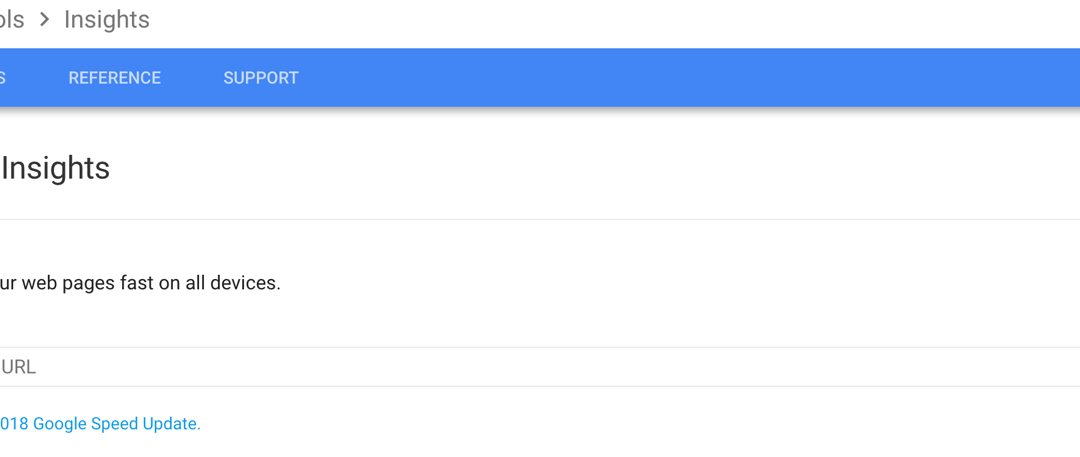Google Speed Update Is Now Out.
What Does This Mean for You?
On July 9th, Google began rolling out the Google Speed Update that they first announced in January 2018. So why is Google’s new speed update important for you if you have a business website?
Bounce Rates Affect Search Rankings
According to Google data, a 3-second load time increases the bounce rate by 32%. Bounce rate is an Internet marketing term used to evaluate web traffic. It represents the percentage of visitors who enter the site and then leave (“bounce”) instead of remaining to view other pages on the same site. What’s more startling is that if your site takes 5 seconds to load, it can increase your bounce rates by 90%, according to Google. To put it in laymen’s terms, every bounce could mean a prospective customer lost.
Since 2010, Google has determined that site speed is a direct ranking factor. Google sees a bounce as a strike against the site in their rankings. At the time, in 2010, this was a desktop-only search update, but the new update includes mobile sites as well.
Google now suggests that website creators embrace a mobile first attitude to accommodate a large number of people now using mobile devices to browse the web. This means that pages should load in less than a second, as slow sites will pay the price in terms of lower search rankings.
While this new update only affects a small percentage of queries and has no precise sign of percentages, according to Google, it’s still important to investigate how Google’s speed update affects you.
What Pages Will Google Speed Update Affect?
The speed update will only affect the slowest pages; the ones that Google states, “deliver the slowest experience to users”. If you already have a site with pages well optimized for speed, this update is not exact enough for you to troubleshoot ways to lower your load time by milliseconds.
However, if you do have pages with poor load times, the update should cause you to sit up and take notice. Many companies depend on consistent organic traffic to push their business, so poor load times should be a big concern.
How Can You Determine Your Page Speed?
It’s important to determine how fast your site loads and where the holdups are. There are several tools you can use to do this. Here are some helpful tips you can use to measure and troubleshoot website speed and page load times.
Google Page Speed Insights
A good place to start for measuring website load times is Google Page Speed Insights. On this site, type and enter the URL of the page you want to check. You will get a report evaluating page speed and user experience, as well as tips on ways to make your website faster.
Pingdom
Pingdom has a website speed test tool similar way to Google Page Speed Insights, but it gives you a report divided into several sections. These include page analysis, a performance grade and a waterfall analysis, helping you identify the most vital causes of website slowdown and how to fix them. It also does a great job of explaining its analytics and testing using a color-coded system.
GTMetrix
GTMetrix combines information from other online page speed tools. After you enter your URL into the on-screen box, it generates a report highlighting tons of different aspects of website load times, and it grades each one from A to F. This grading system lets you take a peek at the areas of your site that worked well and the ones that need your help. Also, GTMetrix ranks the serious issues first, in order of importance, so you know what needs the most attention.
Google Analytics
Google Analytics shows you which pages are underperforming and gives tips on how to identify significant trends as to whether things are getting better or worse. It does this by including site speed in its reports, which can be found in the Behavior section. The Page Speed Suggestions link shows how individual pages could be improved, allowing you to focus on the most important pages first.
How Do You Fix Website Page Speed Issues?
Once you have identified the holdups on your site, the next move is to fix them. All of the tools listed above make suggestions.
Here is a list of the most common recommendations you find on these tests:
Reduce the size of your images
Refine your hosting
Optimize your code
Use a content delivery network
Compress your site
Use caching
Optimize scripts
Reduce the number of external services you use
After you make the recommended fixes, it’s a good idea to test your site to establish a benchmark and re-test at regular intervals.
Any Other Suggestions?
One last tip that Google gives about the speed update is, “The intent of the search query is still a very strong signal, so a slow page may still rank highly if it has great, relevant content.”
Although speed is important, it should not take precedence over the strength of your site’s content. Bad content that loads fast will not rank well. Good content is always going to make your site stronger.
However, if you have great content that is performing well, but your site speed is slow, you might as well take the steps to improve your speed to ensure the best rankings.
